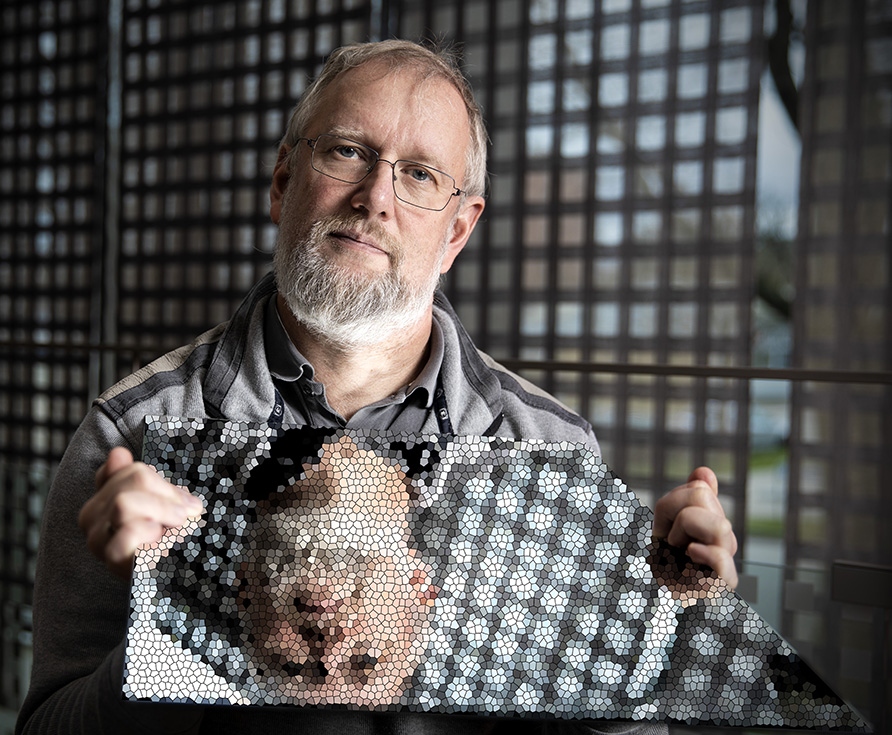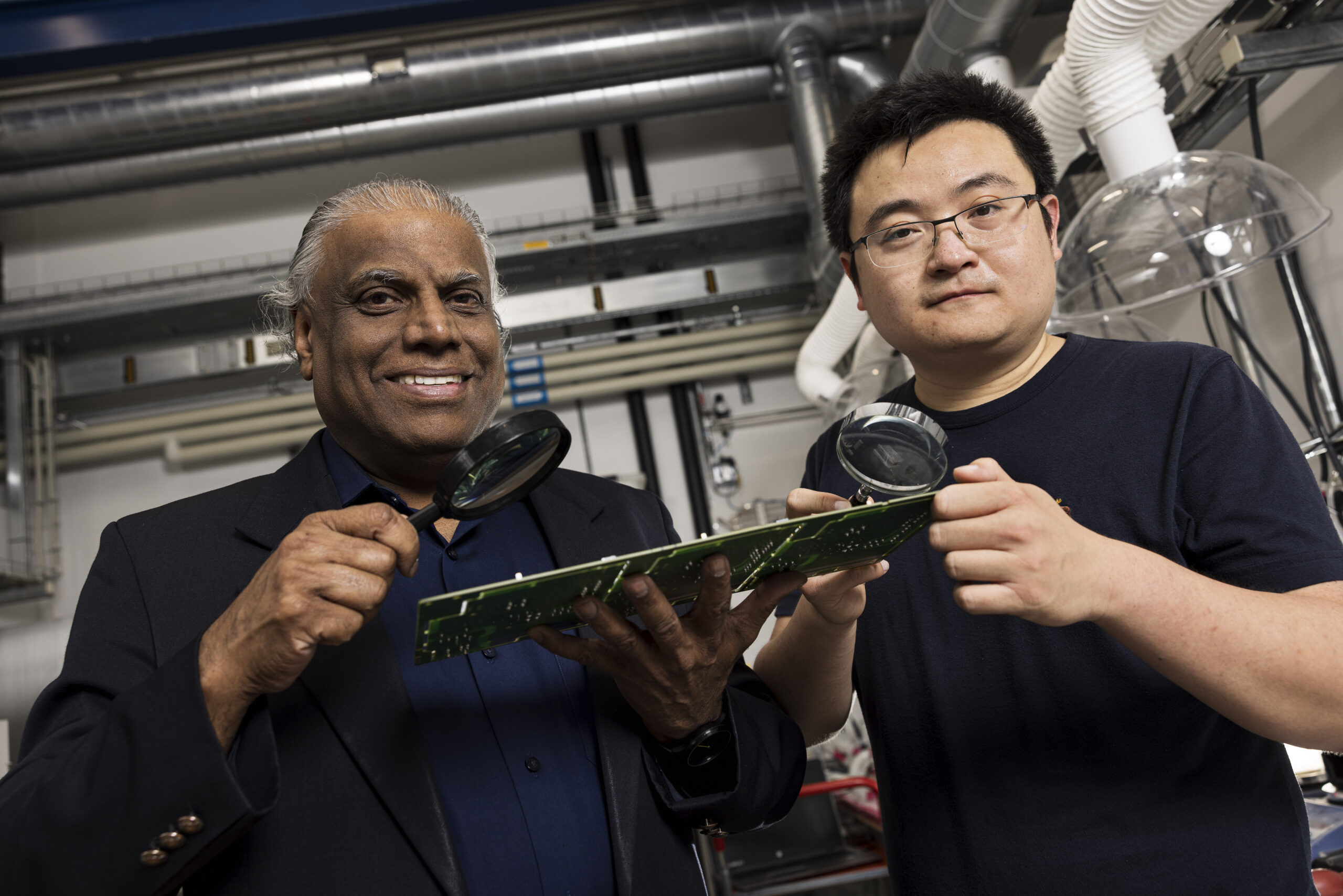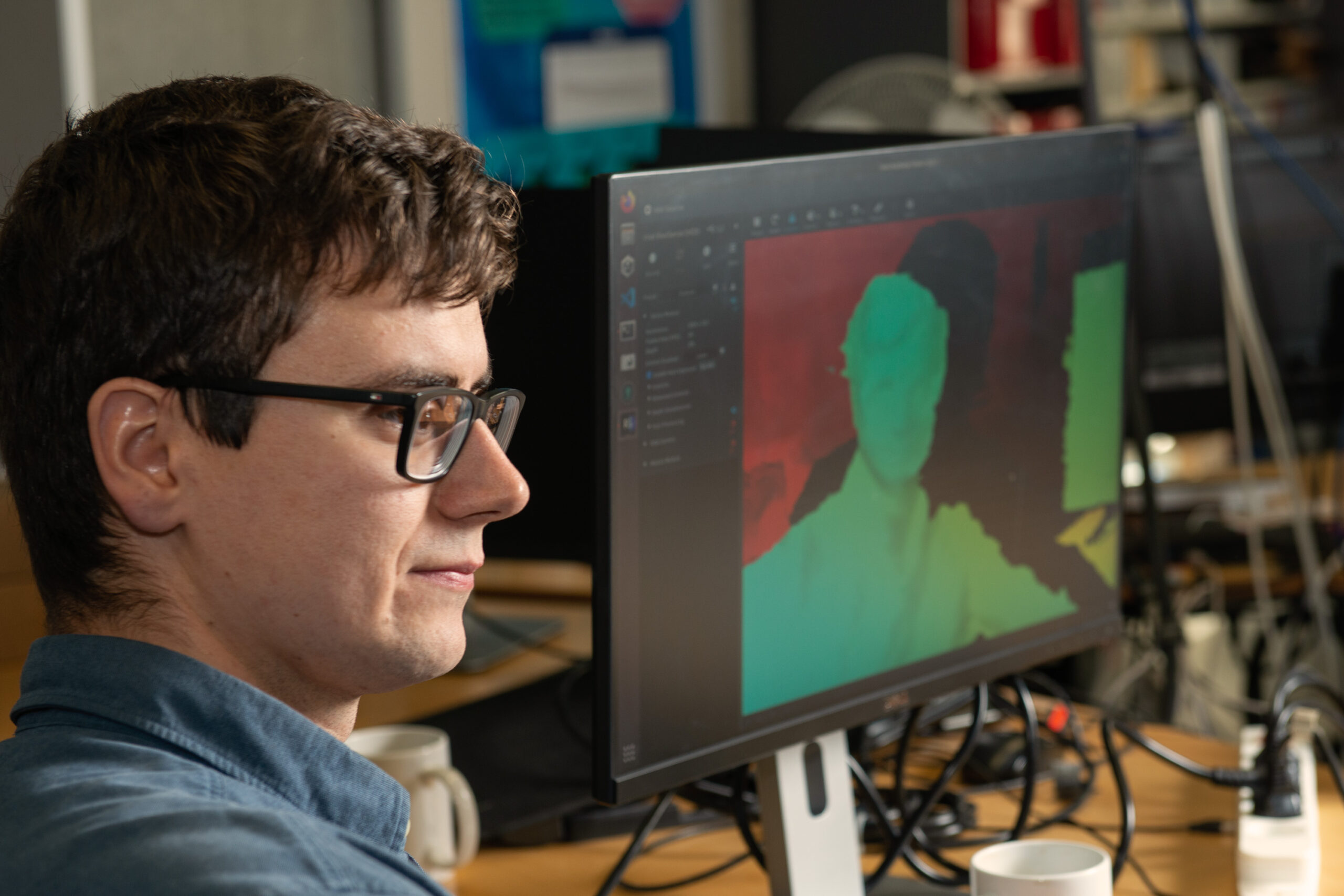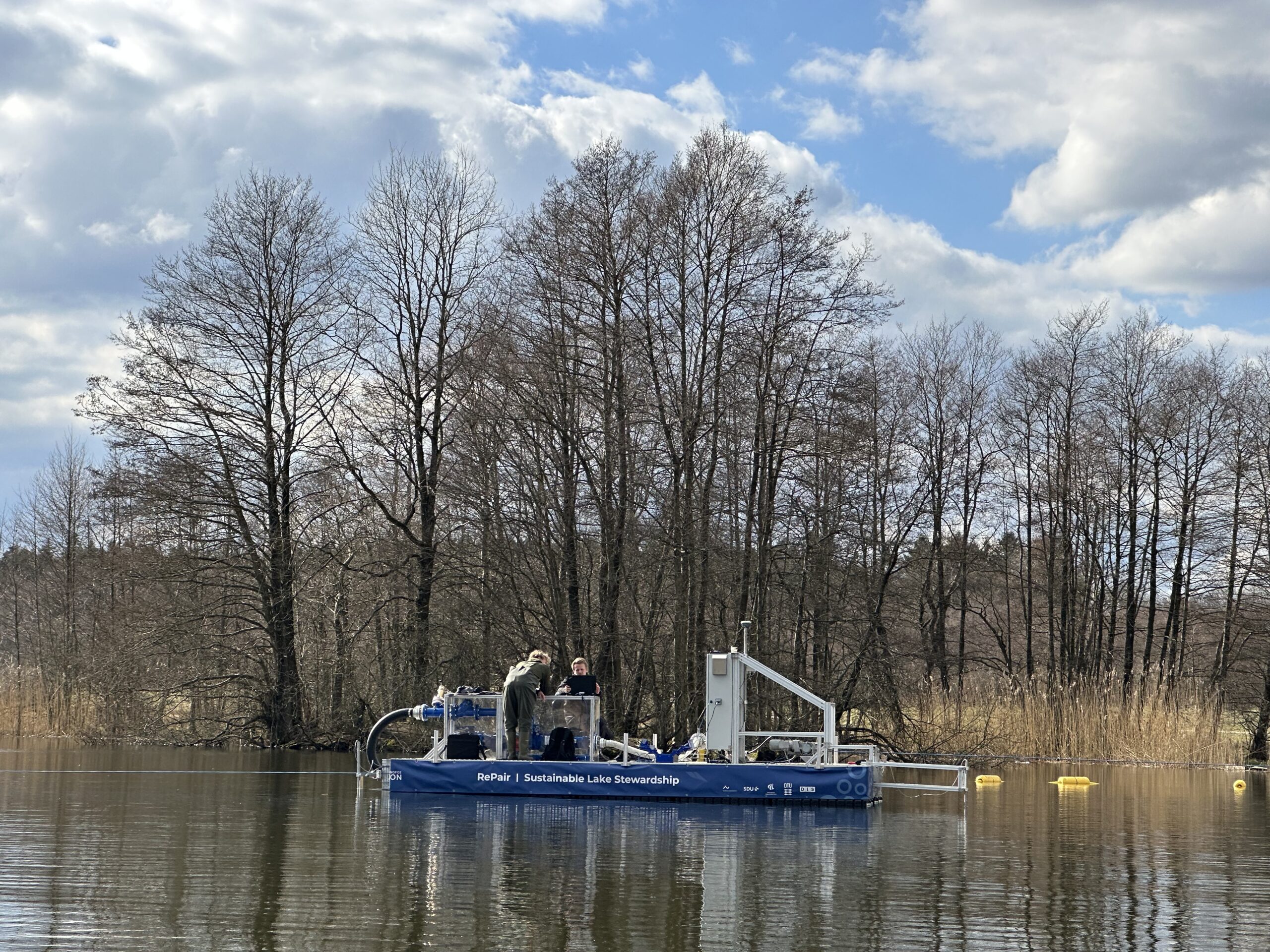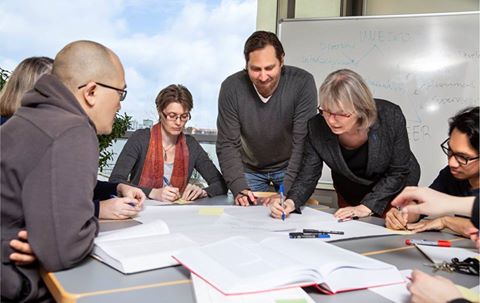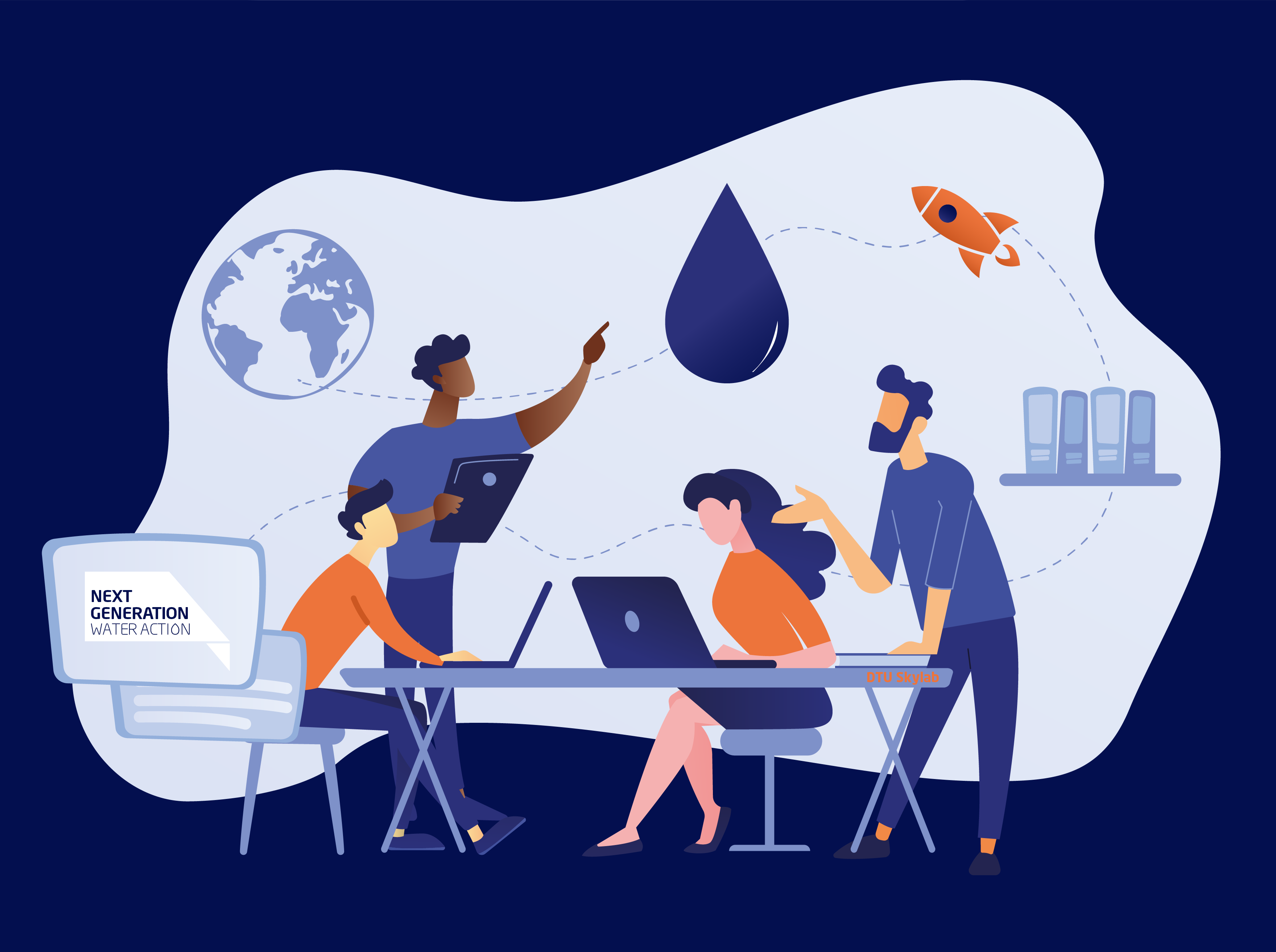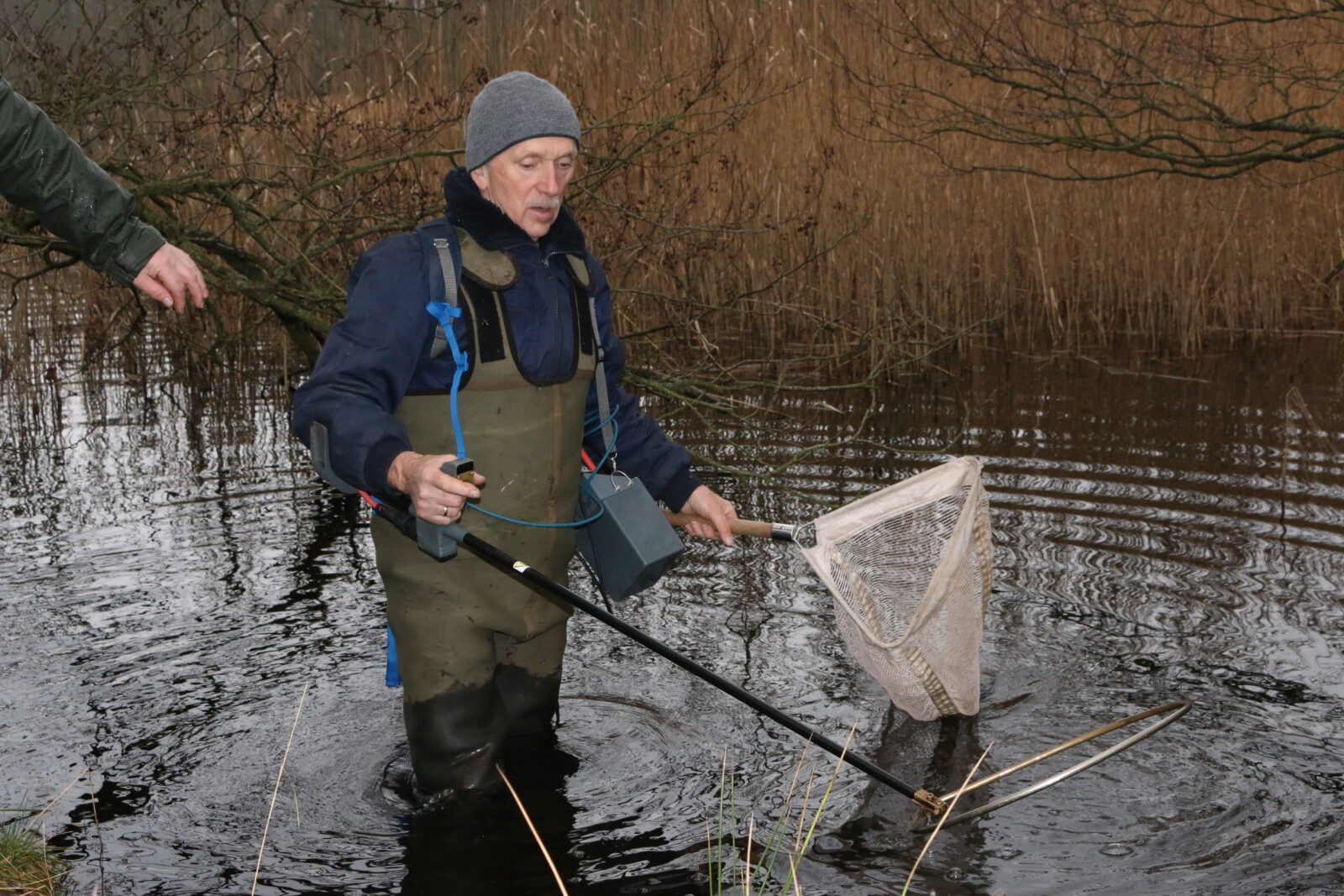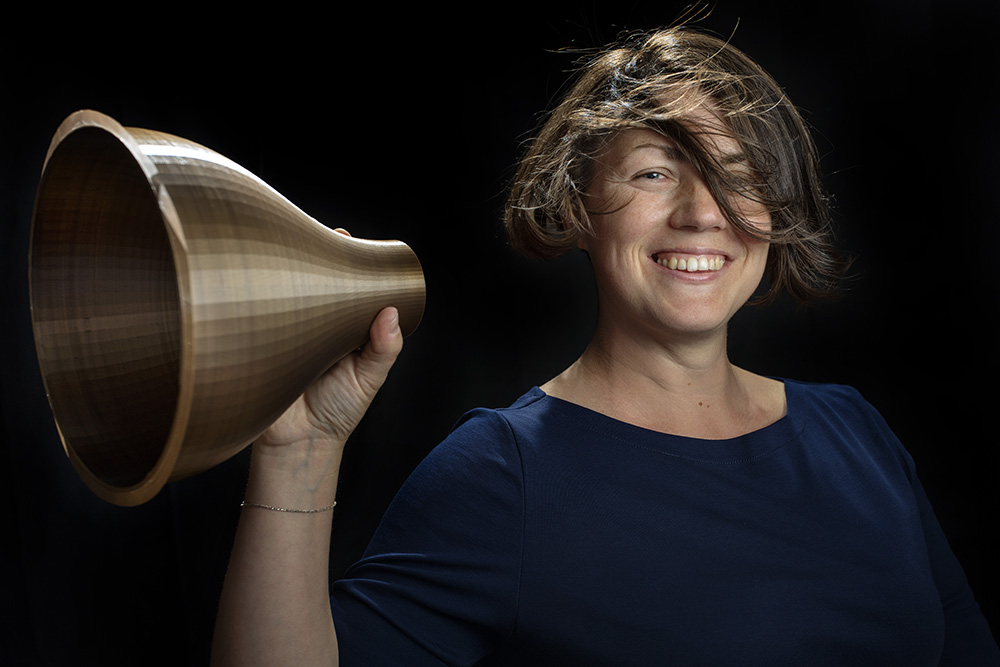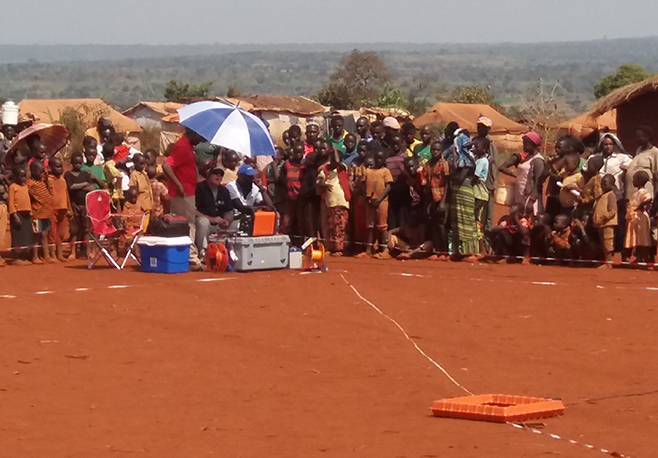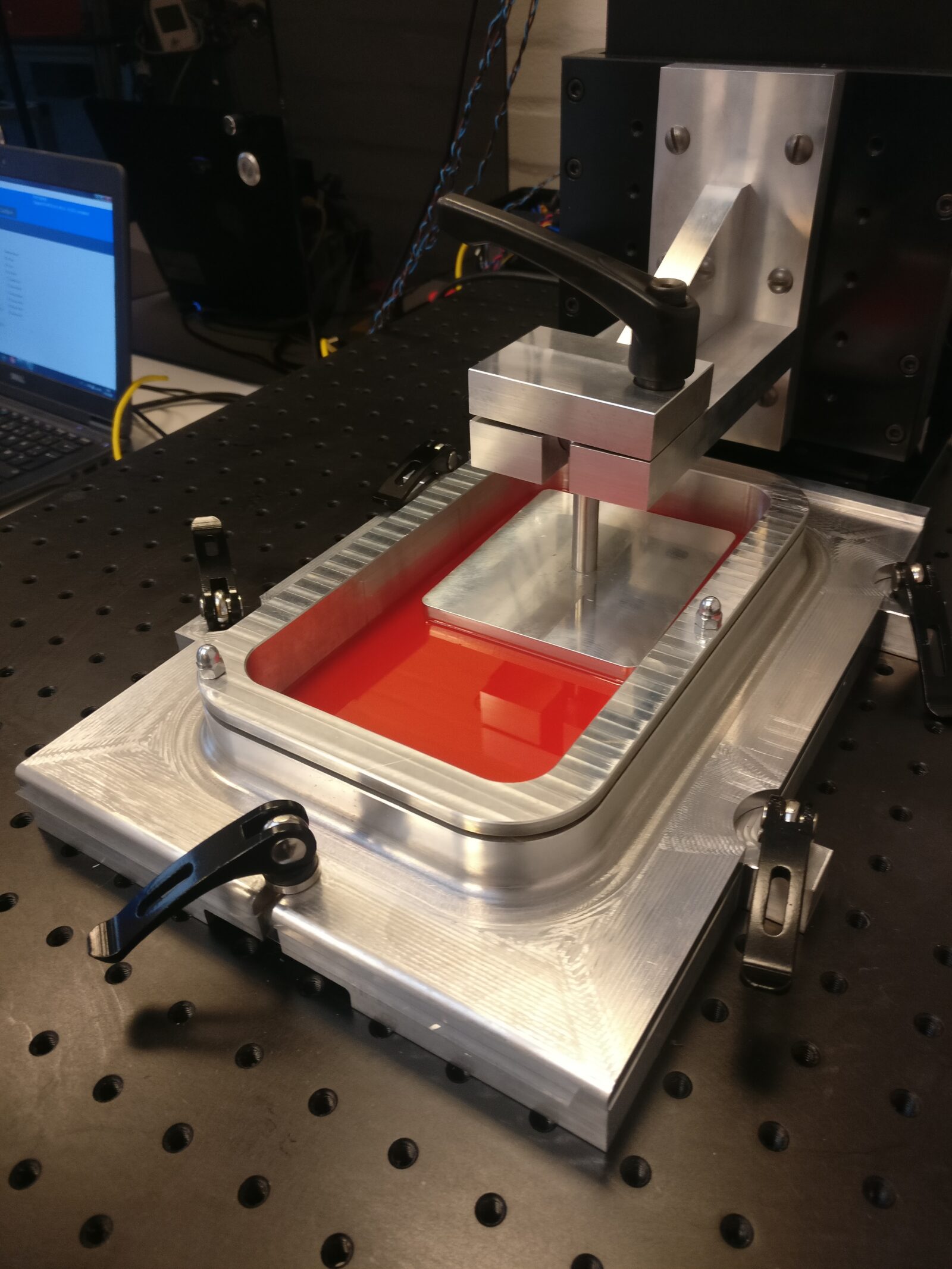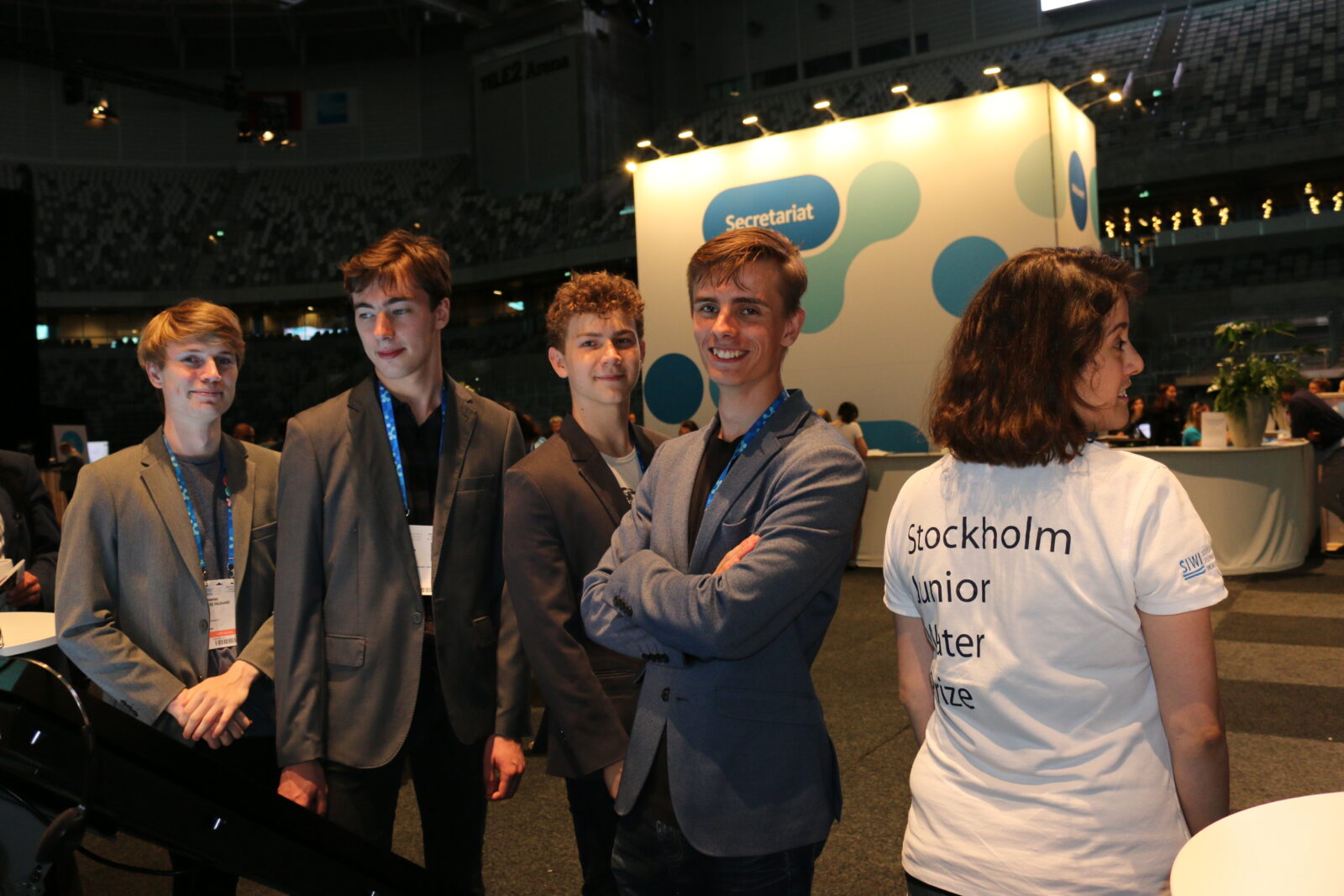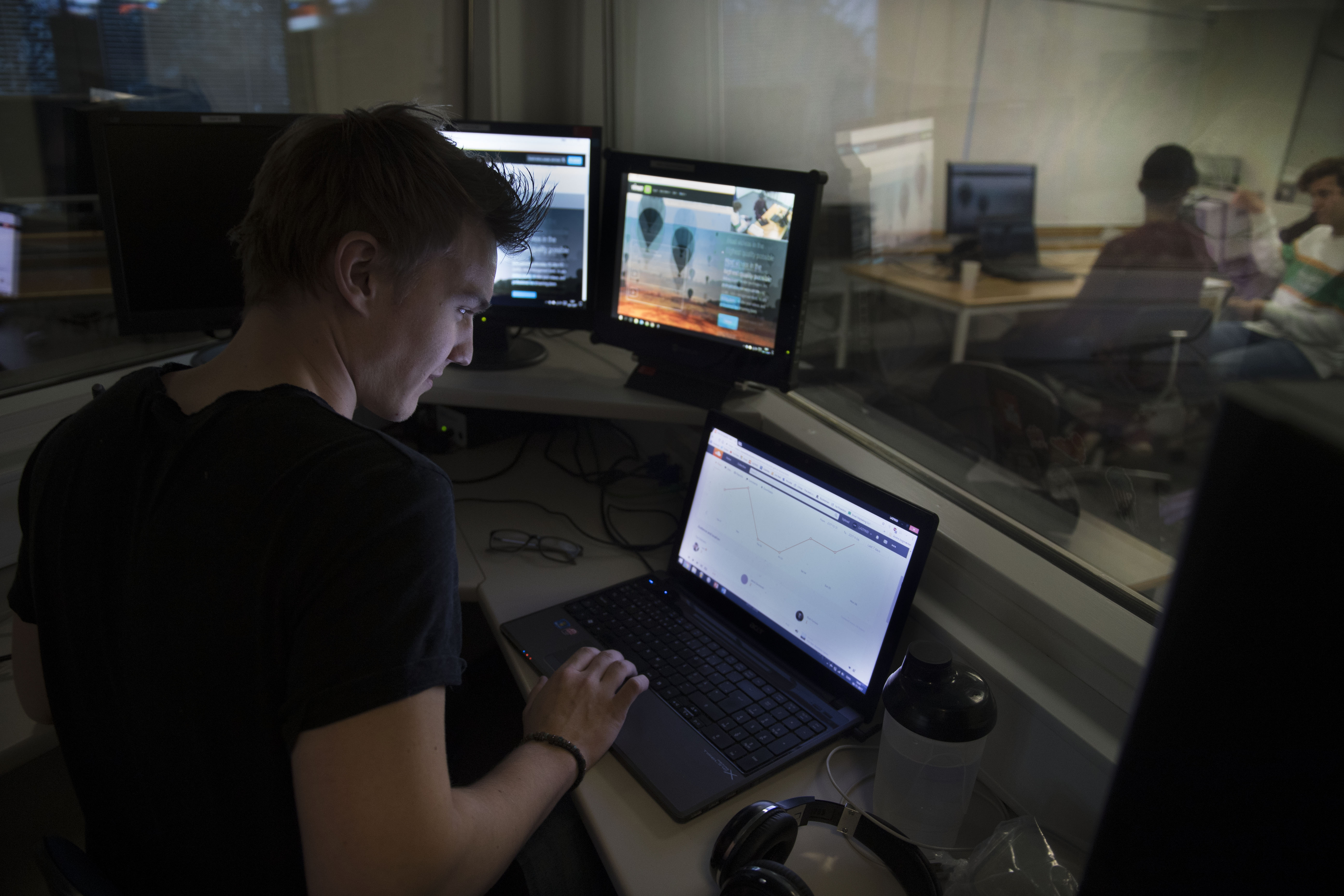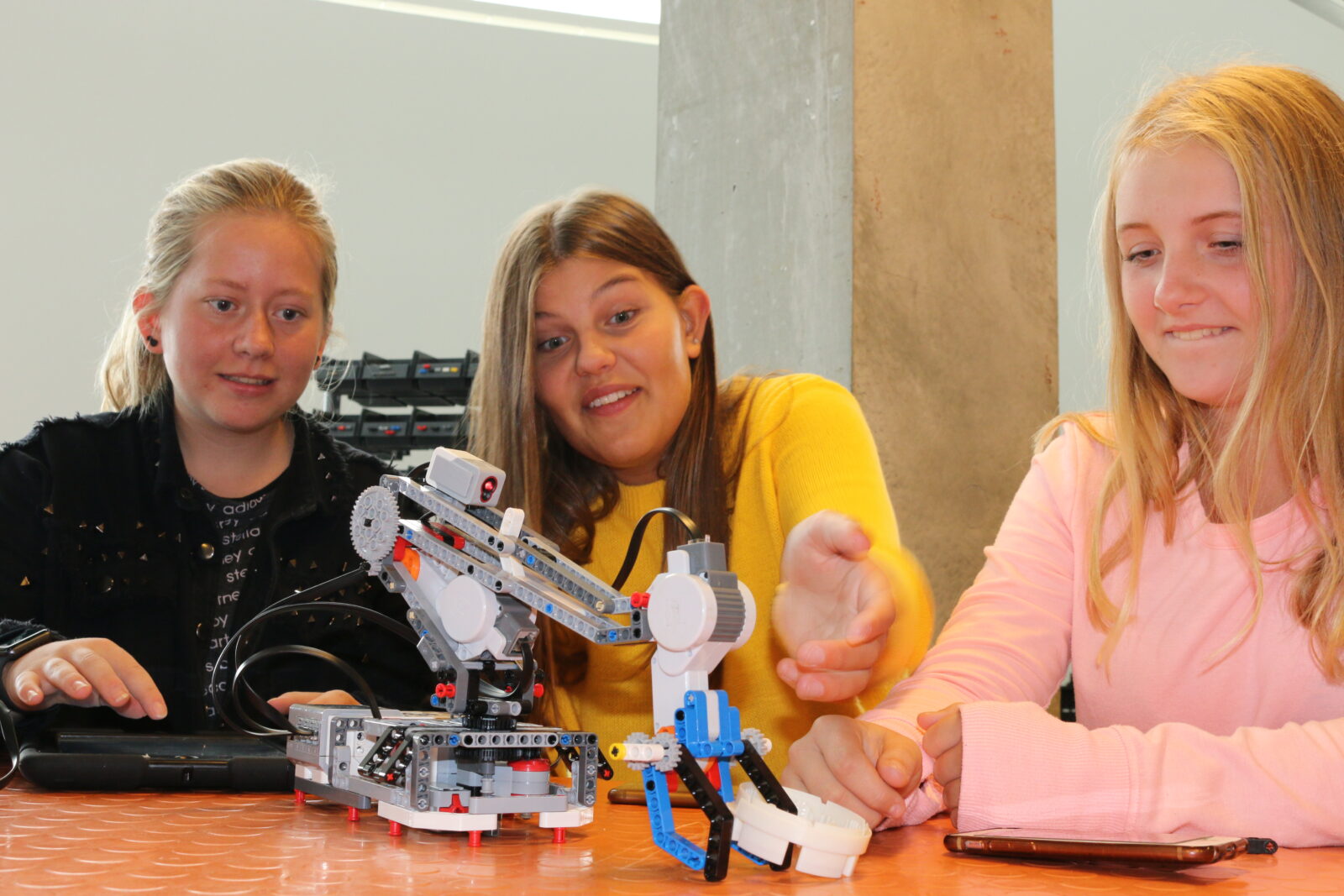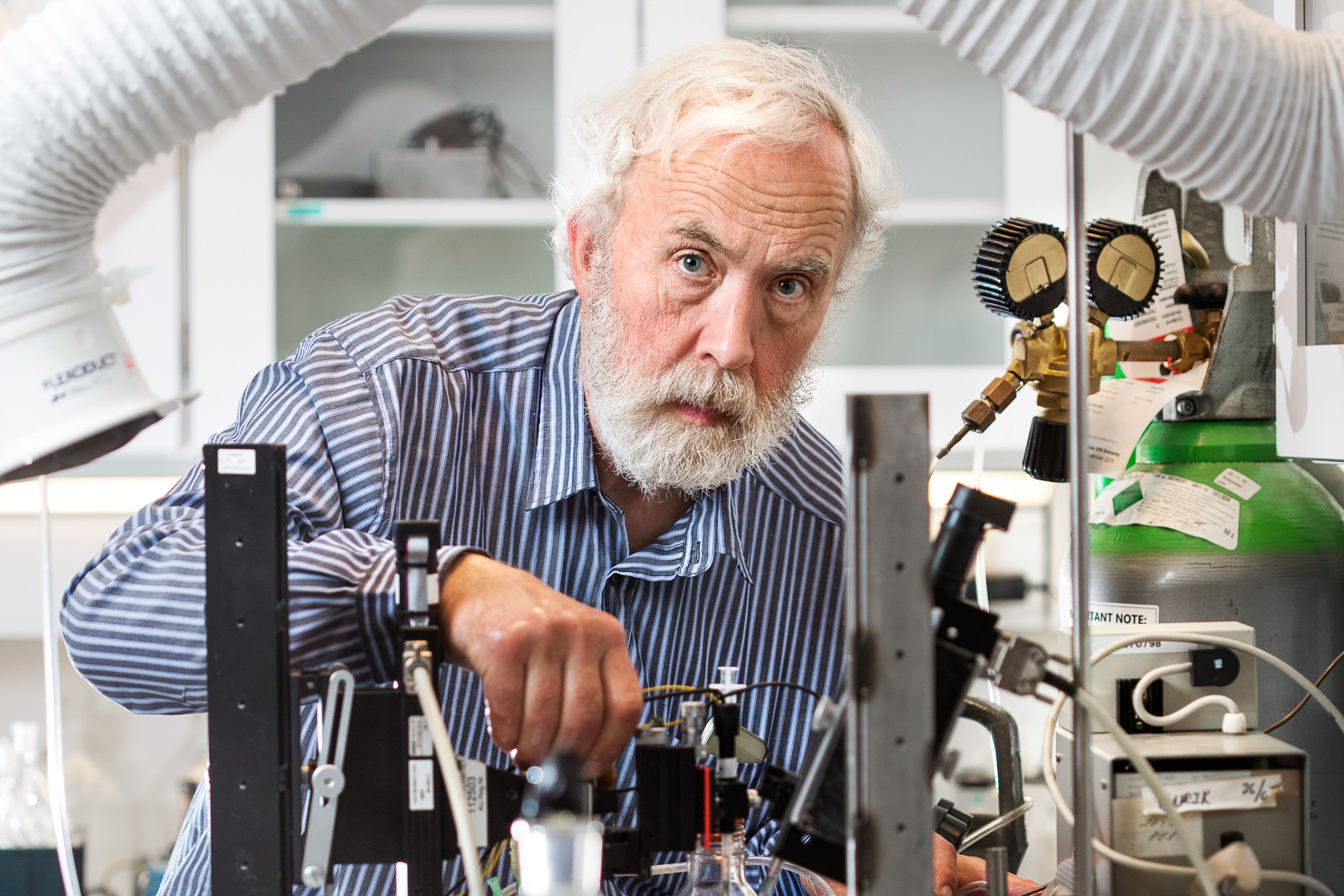The overall goal of the Aarhus University Centre for Digital Twins is to understand how to leverage existing engineering multi-models for the construction of digital twins. This entails improving state-of-the-art in co-simulation algorithms, understanding which multi-models are adequate for digital twin construction, and what kind of faults can be detected/diagnosed.
Attaining this goal implies tackling traditional tradeoffs, such as how detailed we need the co-simulation predicting the behaviour of the digital twin to be, versus how fast? But also new challenges, such as when can one declare that there is a mismatch between the observed behaviour of the original twin, and the simulated behaviour of the digital twin? Can we trust the co-simulation results enough to declare that the original system is faulty when there is a mismatch? What kind of decision support can be provided in analysing the consequences of alternative interventions?
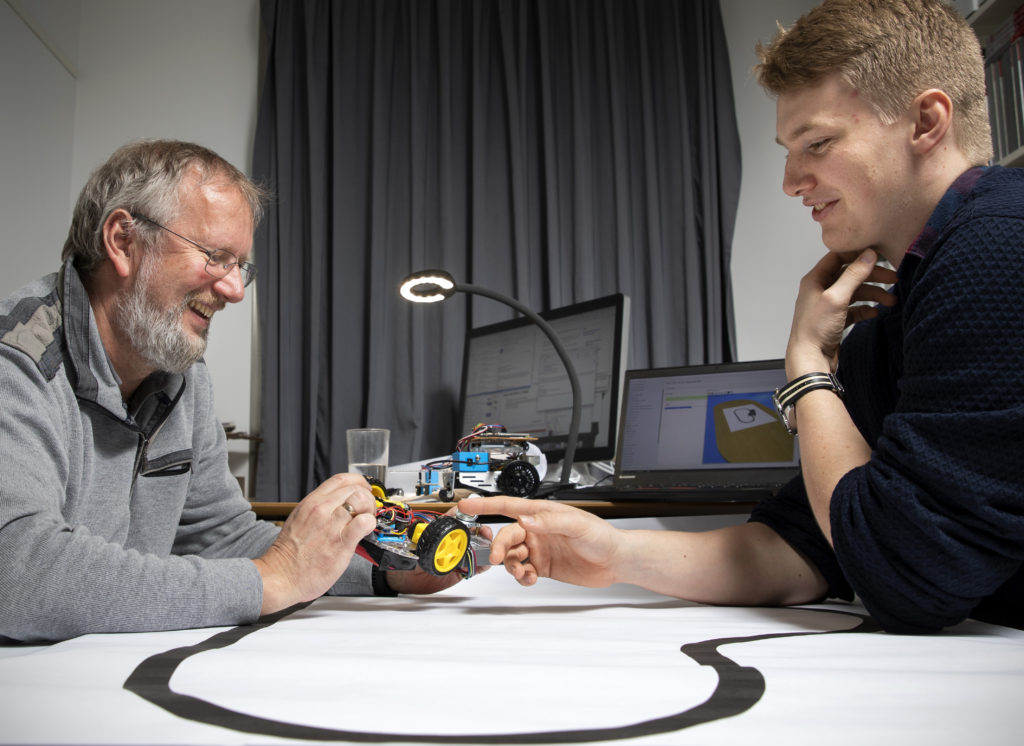
Professor Peter Gorm Larsen and engineering student Christian Legaard with a robot car. The PC in the back shows a digital simulation model. Photo: Aarhus Uni/LK
Industry collaboration
The project is lead by Professor Peter Gorm Larsen, who wants the research to be done in collaboration with relevant companies, both SMEs and larger industry players. He worked in industry for 17 years before becoming a professsor at Aarhus University. Find out more in AU Engineering’s profile magazine (p 34).


